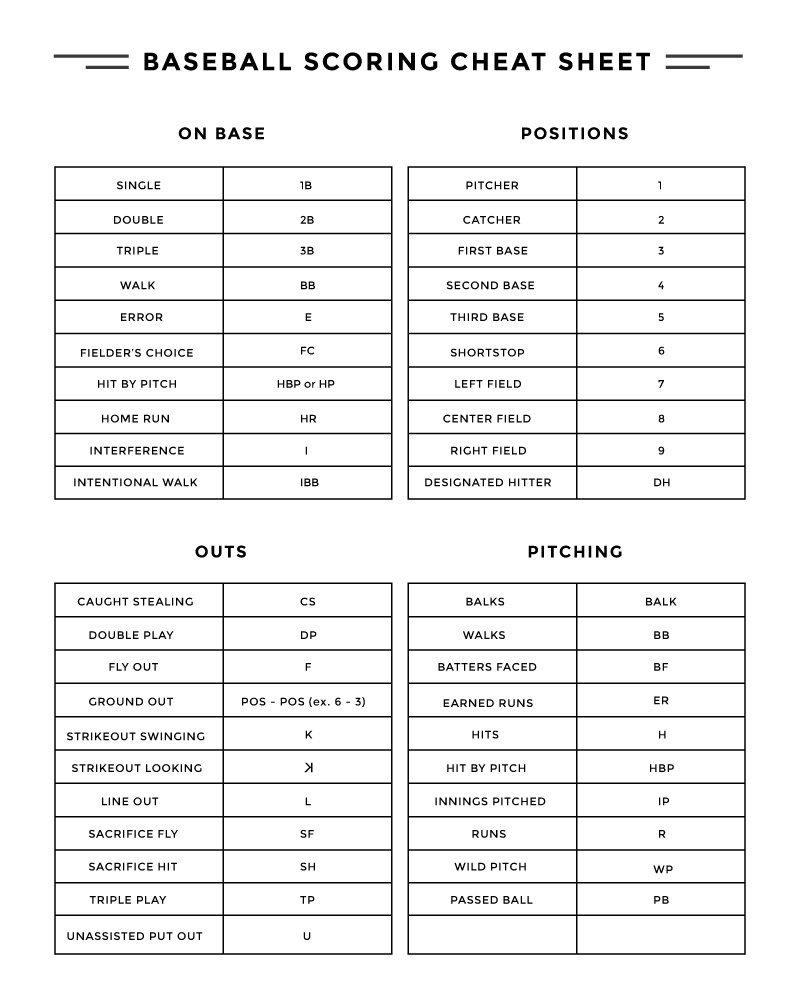How to Score a Baseball Game
Baseball is etched into our national consciousness in graphite. The “Shot Heard ‘Round the World,” Gibson’s walk off against Eckersley, and every game of Joe DiMaggio’s 56 game hitting streak have been catalogued and chronicled using the time-tested art of baseball scoring.
Baseball scorekeeping was invented by Henry Chadwick, the “father of baseball,” in the 1870s. Though the game has evolved and the complexities of scorekeeping have changed over the past 140+ years, the goal of scorekeeping has remained the same: to record each play as it unfolds. To the untrained eye, a baseball scorecard can look like a random series of numbers, letters and shapes. Once you know what you’re looking for, the art of scorekeeping opens up a whole new side of the sport. Using a series of abbreviations, designations and shorthand, scorekeepers can paint a vivid picture of a baseball game.
There is no definitive method of scorekeeping; baseball scoring is as unique to the scorer as the scorecard is to a particular game. But there are some basic principals that carry over, no matter the scorer. Below is a collection of some commonly used abbreviations and scoring techniques.
Major League Baseball provided their own take on the art form in a blog post on MLB.com.
“If the hitter grounds out to shortstop, for example, write in “6-3,” which shows the shortstop threw him out at first base. If the hitter flies out to left field, write a “7.”
If the batter gets a hit, write in the hit according to which base he reached. Each corner of the box represents a base, with the lower-right corner being first.
If he singles, put a “-” in the lower right. If he doubles, write a “=” in the upper right, and so on. For a walk, use “BB” in the lower right. As the runner advances, mark the appropriate symbol in the appropriate corner.
If a runner scores, put a circle at the bottom of the box, and inside the circle put the symbol of the play and/or the player that drove him in. For example, if the No. 5 hitter drives in two runs with a single, mark his single in the bottom right of his box and mark a circle with the number “5” in it in the boxes of the runners who score (Some people like to use uniform numbers here, so you can tell who did what, even after lineup changes).
At the end of each inning, total the hits and runs for that inning only. At the end of the game you’ll be able to add the innings total to get the game score.”
Included with every Volumes subscription is a scorecard of the 56th game of Joe DiMaggio’s hitting streak. Every play of that historic game has been chronicled using a Blackwing 56 pencil. You’ll also find a blank scorecard, so you can create your own baseball memory.
If you aren’t a subscriber, or are just a really avid scorer, you can download our scorecard below.

